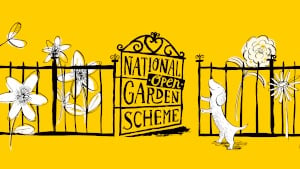About Dean House
This garden, a former farmyard, with mature trees, shady areas, container garden areas, herbaceous borders and a large collection of cannas, cacti, succulents and aeoniums, extends into a field of approximately 5 acres of former farmland. In May 2021, a breeding colony of Great Crested Newts was discovered in the small garden pond. To encourage further biodiversity, and with the help of The Romney Marsh Countryside Partnership, 2 large natural ponds have been excavated funded by Natural England and a MOREwoods grant has been obtained from the Woodland Trust to plant native trees and shrubs. This builds on existing dense hedgerow on the site which attracts nesting birds.
Since 2023 nest boxes have been maintained on the site by members of the East Kent Wildlife Group in the hope of attracting breeding pairs of the red-listed Tree Sparrow. In 2025, 40 Tree Sparrows successfully fledged thanks to the boxes together with 20 Blue Tits and 5 Great Tits. The site provides good habitat for several red-listed birds including Skylarks, Hedge Sparrows, Starlings, Greenfinches and Yellowhammer.
The Bumblebee Conservation Trust has also been of considerable assistance in helping to create wildflower areas thereby providing further food sources for bees and other pollinators. This, together with the garden planting, attracts a number of different bumblebee species including 2 of the rarer species – the Ruderal bumblebee and the Brown-Banded Carder. In 2024 and 2025, the UK’s rarest bumblebee, the Shrill Carder, was recorded on the site.

.jpg)
.jpg)
.jpg)
.jpg)
.jpg)
.jpg)
.jpg)
.jpg)
.jpg)
.jpg)
.jpg)
.jpg)
.jpg)
.jpg)
.jpg)
.jpg)
.jpg)
.jpg)



.jpg)
.jpg)